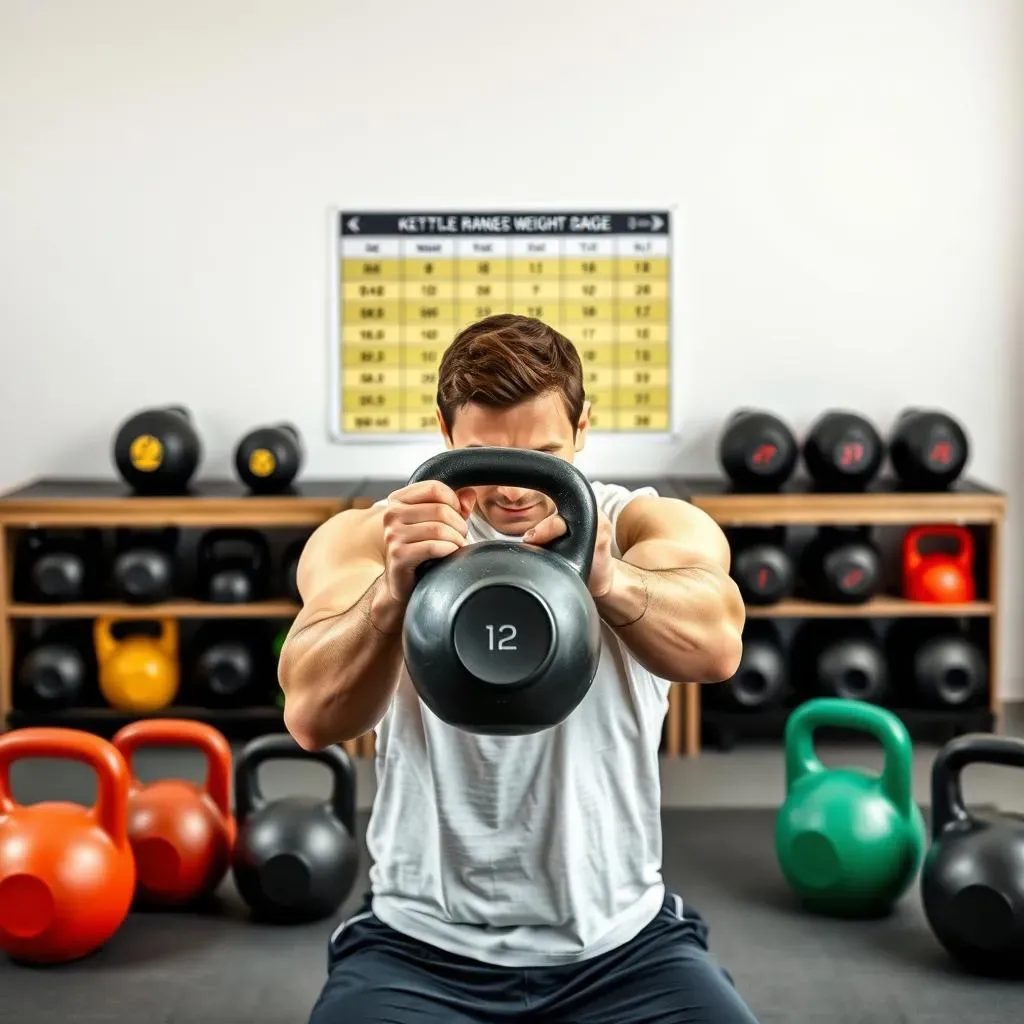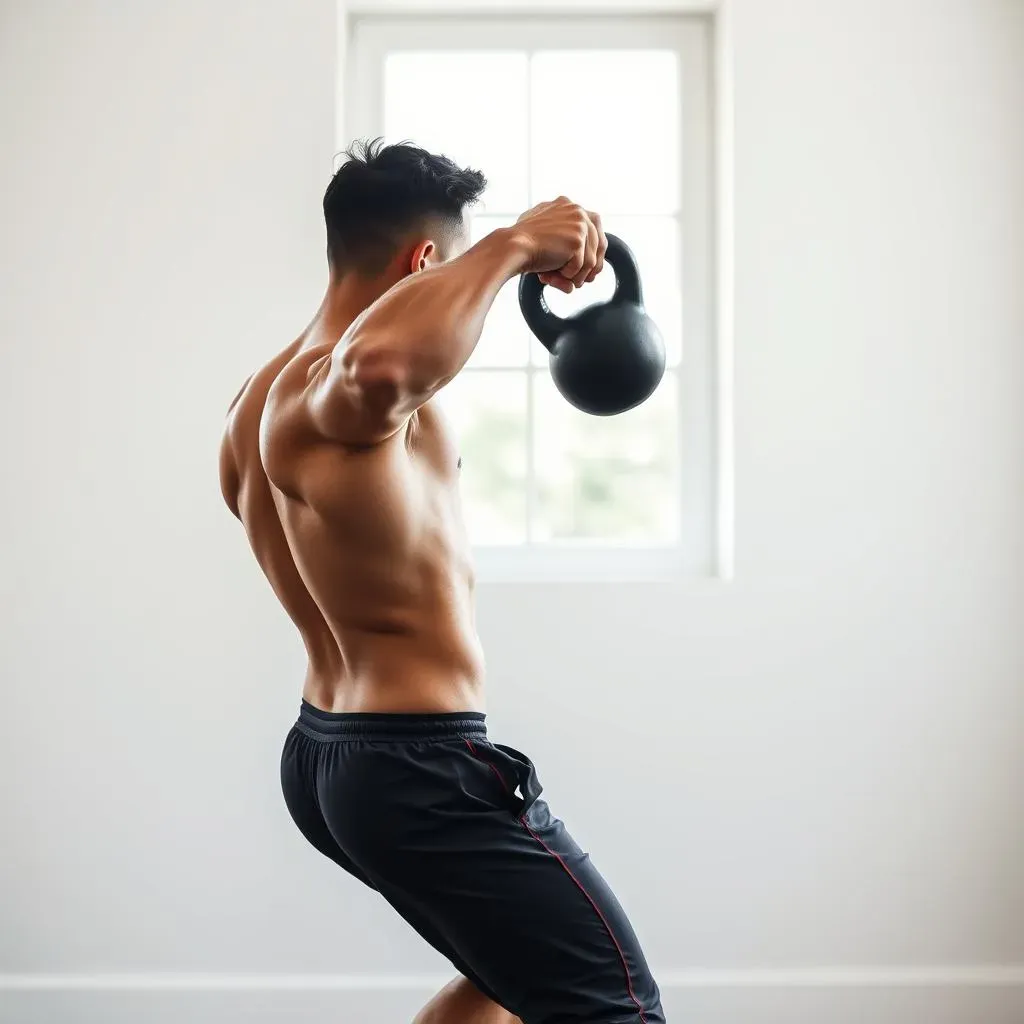Table of Contents
Ready to unlock your inner strength and sculpt a fitter you? This comprehensive guide to beginners kettlebell workouts is your passport to a powerful and effective fitness journey. Forget complicated gym routines and expensive equipment; with just a single kettlebell, you can transform your body and boost your overall well-being. Inside, we’ll walk you through everything you need to know, from selecting the perfect kettlebell weight for your fitness level to mastering fundamental exercises and building a personalized workout plan. We'll cover crucial safety tips to ensure you train effectively and avoid injury. This isn't just another fitness article; it's your step-by-step plan to success, empowering you to build strength, improve cardiovascular health, and increase your overall fitness level. Whether you're a complete beginner or have some experience with weight training, this beginners kettlebell workout guide will provide the knowledge and motivation you need. Prepare to discover a fun, effective, and accessible way to achieve your fitness goals. Let's get started!
Choosing the Right Kettlebell for Your Beginners Kettlebell Workout

Choosing the Right Kettlebell for Your Beginners Kettlebell Workout
Starting Light: The Importance of Choosing the Right Weight
So, you're ready to dive into the world of kettlebells? Awesome! But before you grab the heaviest one you can find (don't!), let's talk about choosing the right weight for your beginners kettlebell workout. Think of it like this: you wouldn't run a marathon on your first day of training, right? Similarly, starting with a weight that's too heavy can lead to frustration, poor form, and potential injuries. Beginners should prioritize proper form over lifting heavy. A lighter kettlebell allows you to focus on mastering the correct technique for each exercise without compromising your body mechanics. This will build a solid foundation for future progress and prevent setbacks.
A good starting point is to choose a weight that allows you to comfortably complete 10-12 repetitions of each exercise with good form. If you're unsure, start with a lighter weight and gradually increase it as you get stronger. Remember, consistency and proper form are key to seeing results. Don't be afraid to start with a lighter weight than you think you need. You can always increase the weight later, but you can't undo an injury caused by poor form. Check out our other beginner guides for more tips and tricks on beginner kettlebell workouts.
Weight Range (lbs) | Recommended for Beginners |
|---|---|
8-12 | Most beginners, especially women |
12-15 | Men and women with some prior weight training experience |
15-20 | More advanced beginners with prior strength training |
Kettlebell Material and Grip: Beyond the Weight
While weight is crucial, the material and grip of your kettlebell also play a significant role in your comfort and workout effectiveness. Cast iron kettlebells are the most common and offer excellent durability. However, they can be quite heavy and sometimes uncomfortable to hold for extended periods. Consider the grip's texture and thickness; a comfortable grip is essential to prevent blisters and calluses, especially during longer workouts. A good grip is crucial for maintaining control and preventing injuries. Some kettlebells are coated with vinyl or other materials for a softer feel, which can be more comfortable for some people. Ultimately, the best kettlebell is one that feels comfortable in your hands and allows you to maintain good form throughout your exercises. Explore different types to find what suits you best. For more advanced routines, you might consider kettlebell workout routines for different skill levels.
Remember, a good kettlebell isn't just about the weight; it’s about the overall experience. A comfortable grip significantly impacts your workout. Don't hesitate to try out different kettlebells at a gym or sporting goods store before making a purchase. Feel the weight, test the grip, and imagine yourself performing the exercises. This will help you make an informed decision that supports your training goals and ensures a positive experience. Investing in a quality kettlebell is an investment in your fitness journey. A comfortable and well-balanced kettlebell will make your beginners kettlebell workout more enjoyable and effective. For a comprehensive guide on getting started, check out our article on kettlebell beginner workouts.
- Cast Iron: Durable, classic, but can be heavy and cold.
- Vinyl-Coated: Softer grip, more comfortable, but may wear out faster.
- Competition Kettlebells: Consistent size regardless of weight.
Mastering Fundamental Kettlebell Exercises for Beginners

Mastering Fundamental Kettlebell Exercises for Beginners
The Kettlebell Swing: Your Foundation Exercise
Let's start with the king of kettlebell exercises: the swing. It's deceptively simple, but mastering the swing unlocks the power of kettlebell training. Think of it as a full-body movement that builds power from your hips, not your back. The key is to hinge at your hips, keeping your back straight and engaging your core. The kettlebell should move in a pendulum-like motion, using the power of your legs and glutes to propel it forward. Avoid using your arms to force the movement; let your body's momentum do the work. Start with a lighter weight and focus on perfecting your form before increasing the weight. Watch videos, practice in front of a mirror, and even consider getting feedback from a trainer to ensure you're performing the swing correctly. A proper swing is the foundation for many other kettlebell exercises, so take your time and master this one first. It’s a fantastic full-body workout.
Remember, a good swing is all about hip hinge, not back strain. Focus on feeling the power generation in your glutes and hamstrings. Once you've nailed the technique, you can increase the weight gradually. Don't rush the process. Many beginners find it helpful to practice the swing without weight first, focusing on the correct hip hinge movement. For more detailed instructions and variations, check out our guide to beginner kettlebell workouts.
Swing Phase | Muscle Focus | Key Tip |
|---|---|---|
Hip Hinge | Glutes, Hamstrings | Keep back straight, core engaged |
Swing Up | Glutes, Hamstrings, Core | Use hip power, not arm strength |
Swing Down | Core, Hamstrings | Controlled movement, avoid dropping the kettlebell |
Goblet Squats and Turkish Get-Ups: Building Strength and Stability
Next up are two fantastic exercises that build lower body strength and core stability: goblet squats and Turkish get-ups. Goblet squats involve holding the kettlebell close to your chest, like a goblet, and performing a squat. Focus on maintaining good posture and going as low as you comfortably can while keeping your back straight. Turkish get-ups (TGUs) are more advanced but incredibly effective. They involve lying down with the kettlebell, then smoothly transitioning to a standing position, all while maintaining control and balance. This exercise is a full-body challenge that improves coordination, strength, and stability. It’s a more complex exercise, so it’s better to master the basic exercises first.
For beginners, it's crucial to master the fundamentals of each exercise before moving on to more advanced variations. Start with a lighter weight for both goblet squats and Turkish get-ups, focusing on proper form and controlled movements. It’s always better to start slow and build up your strength and endurance. Gradually increase the weight as you become more comfortable and confident in your ability to maintain good form. Remember, consistency is key! For more beginner-friendly routines, check out our collection of kettlebell workout routines for beginners.
- Goblet Squat: Focus on depth and maintaining a straight back.
- Turkish Get-Up: Start with a lighter weight and focus on controlled movements.
- Both exercises build strength and stability.
Creating Your First Beginners Kettlebell Workout Routine

Creating Your First Beginners Kettlebell Workout Routine
Building Your First Workout: A Simple Approach
Alright, you've chosen your kettlebell and know a few basic exercises. Now let's craft your first killer workout! Remember, consistency trumps intensity, especially when starting. Begin with a full-body routine 2-3 times a week, allowing at least one day of rest between sessions. Focus on quality over quantity; perfect form is more important than the number of reps. A good beginner routine could look something like this: Kettlebell Swings (10-12 reps), Goblet Squats (10-12 reps), Rows (8-10 reps per side), and Overhead Presses (8-10 reps per side). That's a fantastic start!
Don't try to do too much too soon. Start with 2-3 sets of each exercise, and listen to your body. If you're feeling exhausted or experiencing pain, stop and rest. Remember, building a solid foundation is key to long-term success. A well-structured beginners kettlebell workout plan should be challenging but sustainable. Check out our other resources for more ideas on beginner kettlebell workouts and modify them to fit your needs.
- Warm-up (5-10 minutes of light cardio and dynamic stretching)
- Workout (3 sets of each exercise)
- Cool-down (5-10 minutes of static stretching)
Workout Structure and Progression
Structure your workout for optimal results. Start with the most demanding exercises, like swings, when your energy levels are highest. Follow with less demanding exercises, like rows and presses, as you fatigue. Remember to prioritize proper form throughout. As you get stronger, you can gradually increase the number of sets, reps, or weight. Consider adding new exercises to challenge your muscles further. You could try things like Turkish get-ups. Remember to always listen to your body and adjust your routine as needed.
Progression is key to continued improvement. As you get fitter, consider increasing the weight, reps, or sets. You could also add more challenging exercises to your routine. Don't be afraid to experiment, but always prioritize proper form. Remember to take rest days to allow your muscles to recover and rebuild. For more advanced routines and to learn more about progression, check out our guide on beginner kettlebell workout routines.
Week | Sets | Reps | Rest |
|---|---|---|---|
1-2 | 2 | 10-12 | 60 seconds |
3-4 | 3 | 12-15 | 60 seconds |
5+ | 3-4 | 15+ | 90 seconds |
Progressing Your Beginners Kettlebell Workout: From Novice to Confident Lifter

Progressing Your Beginners Kettlebell Workout: From Novice to Confident Lifter
Increasing the Challenge: Weight, Reps, and Sets
So you've mastered the basics? Fantastic! Now it's time to level up your beginners kettlebell workout. The key to continued progress is progressive overload – gradually increasing the demands placed on your muscles. This can be done in several ways. First, consider increasing the weight of your kettlebell. Once you can comfortably complete your sets and reps with good form, add a small increment of weight (1-2kg or 2-5lbs) to challenge yourself further. Alternatively, you can increase the number of repetitions (reps) you perform for each set. If you're currently doing 10 reps, try increasing it to 12 or 15. Another way to progress is to increase the number of sets you perform for each exercise. If you're doing 2 sets, try adding a third. Remember to always prioritize maintaining good form. Don't sacrifice technique for more weight or reps; proper form prevents injuries.
Remember, listen to your body. If you're feeling pain or excessive fatigue, it's crucial to rest and recover. Progressive overload should be gradual and sustainable. Don’t jump straight to the heaviest kettlebell you can find. It's a marathon, not a sprint. For more tips on building strength and endurance, check out our other guides on beginner kettlebell workouts. Consistency is key, and by progressively increasing the intensity of your workouts, you will continue to see results.
- Increase weight gradually.
- Increase reps gradually.
- Increase sets gradually.
Adding New Exercises and Workout Variations
Once you feel comfortable with the fundamental exercises, you can start incorporating new moves into your beginners kettlebell workout. This adds variety, challenges different muscle groups, and keeps your workouts engaging. Consider adding exercises like the Turkish get-up, which is a fantastic full-body exercise that improves strength, stability, and coordination. You can also explore different variations of the kettlebell swing, such as the Russian swing or the American swing. These variations target slightly different muscle groups and can add a new dimension to your training. Remember to learn the proper form for any new exercise before incorporating it into your routine. Watch videos, read instructions carefully, and if possible, get guidance from a qualified trainer.
Remember, variety is the spice of life (and fitness!). Adding new exercises and variations helps prevent plateaus and keeps your workouts interesting. Don't be afraid to experiment with different combinations and sequences to find what works best for you. As you progress, you might consider structuring your workouts differently, such as incorporating circuit training or high-intensity interval training (HIIT). These training methods can be incredibly effective for building strength and improving cardiovascular fitness. For a deeper dive into workout structure and planning, check out our advanced guide on kettlebell workouts for beginners. Always remember to listen to your body and adjust your routine as needed.
Exercise | Muscle Focus | Difficulty |
|---|---|---|
Turkish Get-Up | Full Body | Intermediate |
Russian Swing | Hips, Glutes, Core | Intermediate |
American Swing | Shoulders, Back, Core | Intermediate |